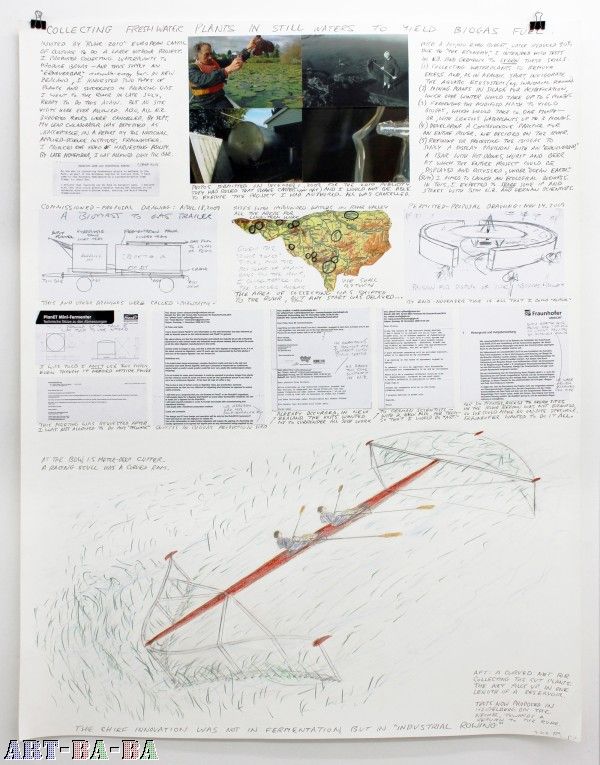
彼得·芬德(Peter Fend)个展“Uber die Grenze”纽约开幕
作者:陈颖编译

彼得·芬德(Peter Fend)个展“Uber die Grenze”近日在纽约Essex Street画廊开幕。“Uber die Grenze”是德国科学与技术部艺术小组在1991年时用来描绘彼得的作品的术语,它的意思是“跨越了界限”。从那时候起——又特别是在刚过去的那个10年中,彼得的所有作品都可以看作是“跨越了界限”,并且都是一些以前从未看到、读到或是完成过的作品。
这场在Essex Street画廊展出的展览呈现了一系列“跨越了界限”的项目,这其中包括:-提议在切尔诺贝利附近修建一条河道,以降低河流对核反应堆产生的压力。
-为有争议的场所建立卫星图像供全球的大众媒体使用,证明利用这些图像进行创作是平民艺术家的权利与职责。
-以全球的淡水系统而非当前的国家系统为基础绘制地图,为可持续资源及减少环境破坏发展合理的政策。
-整修进入波斯湾的水流,以还原动物的栖息地环境。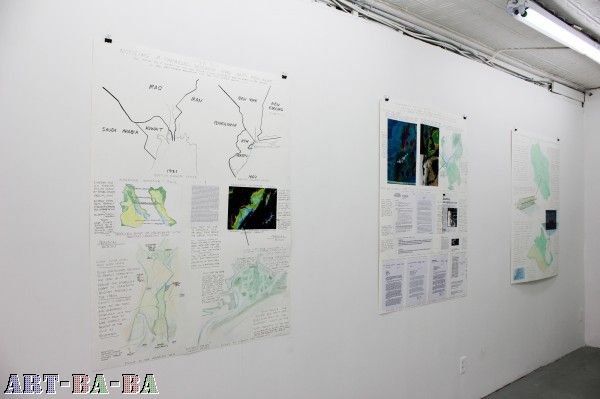
这些项目都是受不同的组织机构邀请或是委任为展览或是出版物特别设计的,这其中包括卡塞尔文献展、威尼斯双年展、威尼斯建筑双年展、新美术馆、伦敦Marc Jancou画廊、美国国会、东京都政府等等。然而,每个项目都没能实现至其必需的程度。人们需要去理解彼得的雄心壮志。其作品蕴含的理念以及潜在价值最终都因审查制度被修改了,或是被盗走了、废弃了。不过对于彼得来说,他的根本目的只是为了“跨越界限”,利用先锋派理应具备的自由以及催化剂的特性去超越。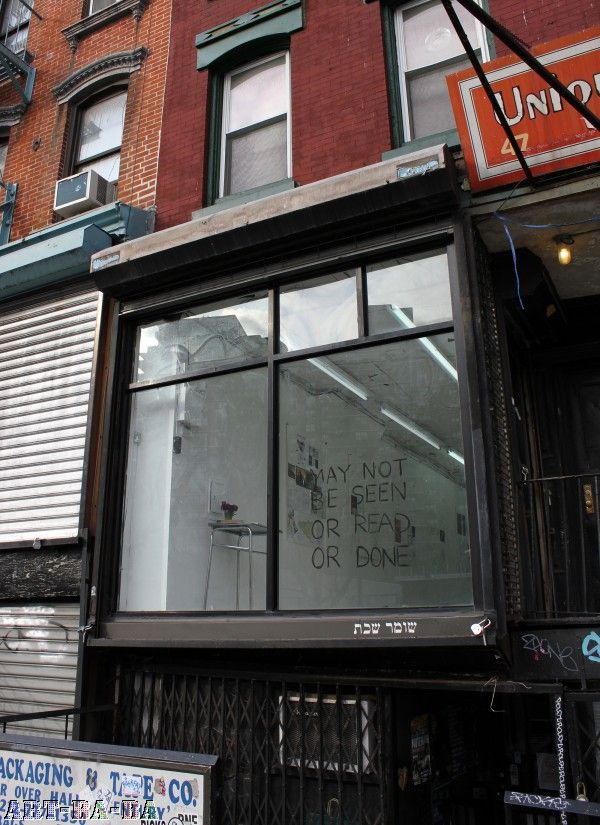

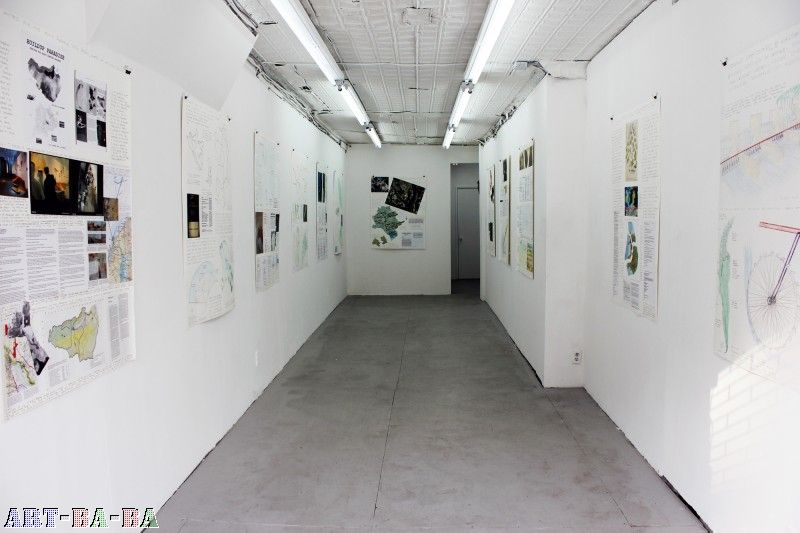
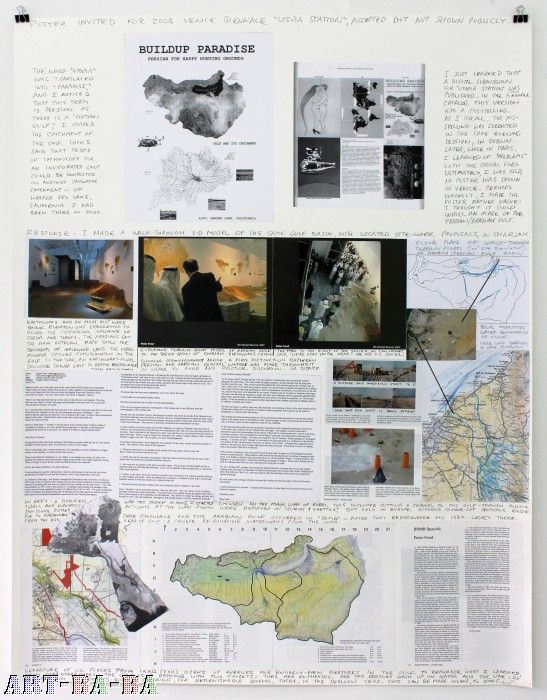

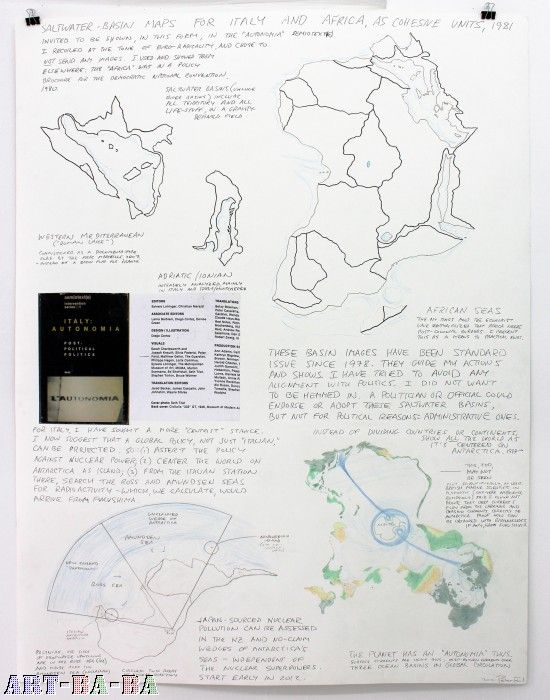
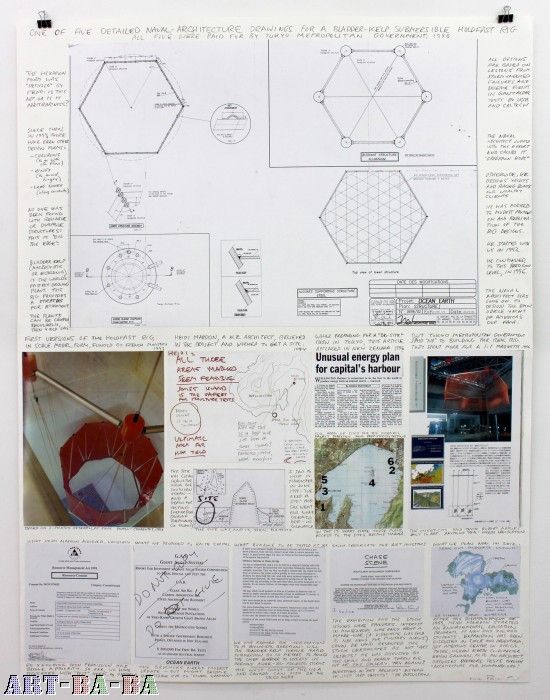
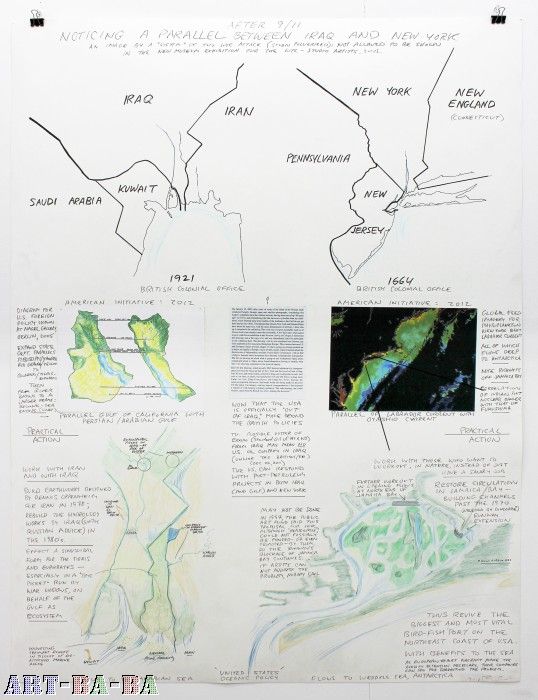
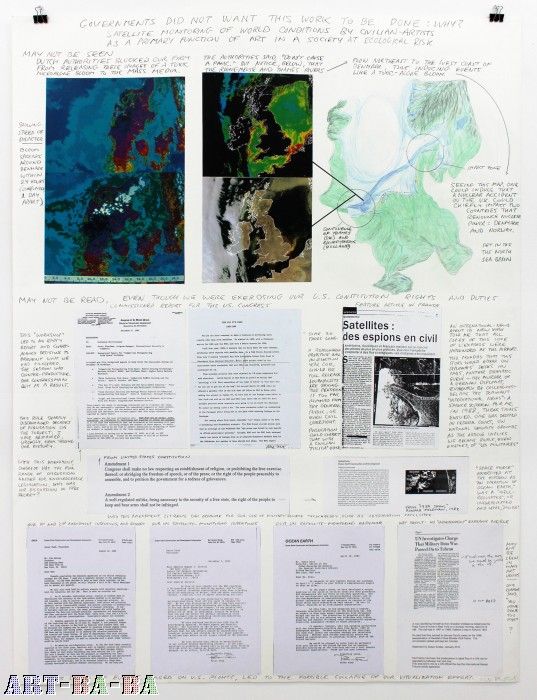

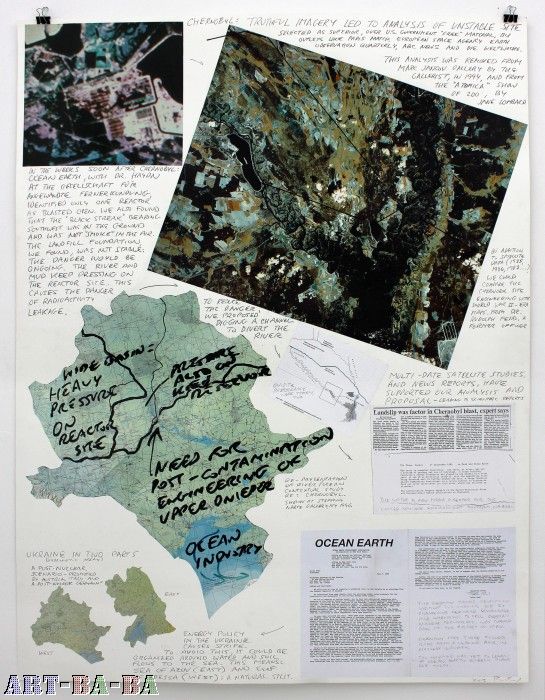
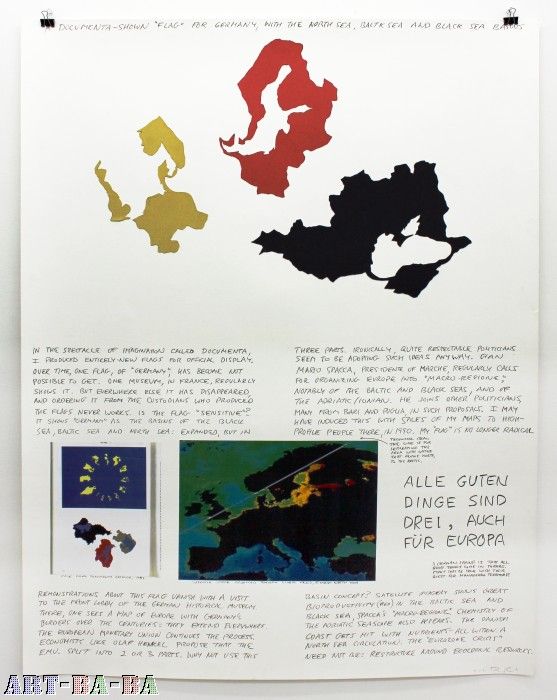
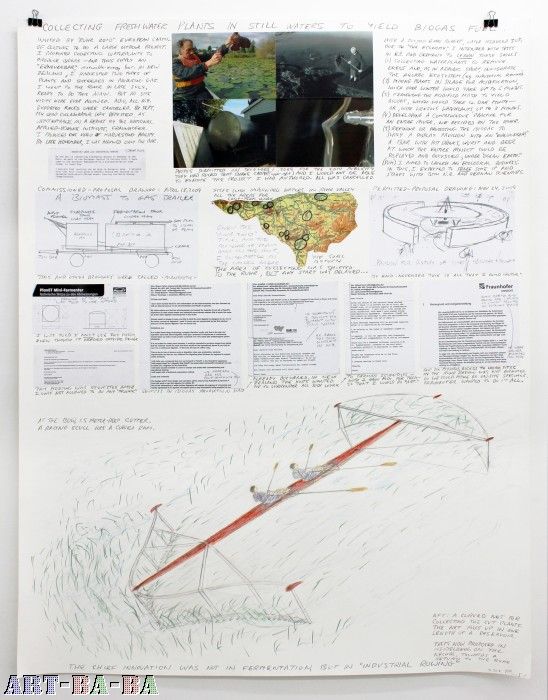
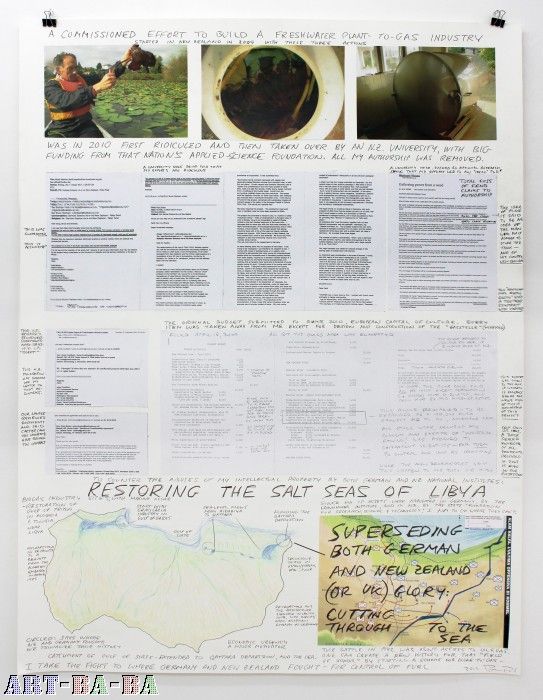
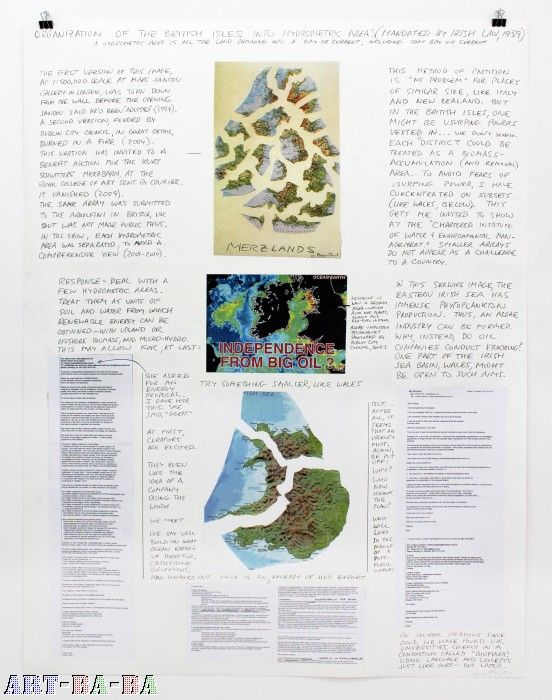
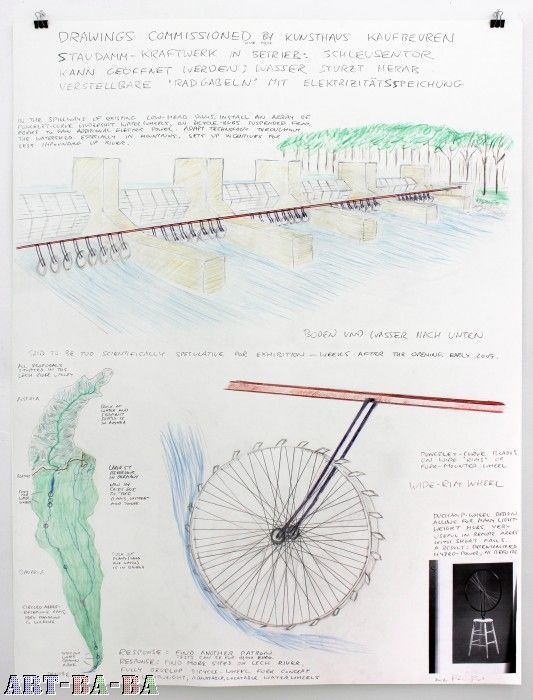
Images courtesy of Essex Street, New York
Press Release:
Über die Grenze is the term used by the German Ministry of Science and Technology, Art Department, to describe, in 1991, the work of Peter Fend. It means “out of bounds.”
Since that time, and especially in the past decade, most of the work Fend produces is Über die Grenze and hasn’t been seen or read or done.
ESSEX STREET presents a survey of several Über die Grenze projects.
These projects include:
-proposing a channel near Chernobyl to reduce river pressure on the reactor site
-producing satellite imagery of contested sites for global mass-media, and demonstrating the rights and duties of civilian artists to work with such imagery
-conceiving and testing an offshore rig for rapid growth of giant algae—to yield bio-gas
-drawing maps based on the world’s saltwater systems, and not present-day nation states, to develop rational policies for renewable resources and reverse environmental decline
-restoring water-flows into the Arabian/Persian Gulf, in order to bring back animal habitat
-designing and deploying lightweight, undershot waterwheels reducing dependency on river-blocking dams -organizing the efficient collection of weeds that accumulate in sluggish waters—to clear the water, and then processing them in silaging and fermenting tanks for methane
-showing the parallels of the borderline layout of NY, CT, NJ and PA to that of Iraq, Iran, Kuwait and Saudi Arabia, which previsioned the strategies of the eventual attack on Iraq in 2003
In every case, these projects were initially invited or commissioned for exhibition or publication by various institutions, including Documenta; the Venice Biennale; the Venice Architecture Biennale; Semiotext(e); the European Capital of Culture Ruhr 2010; Kunsthaus Kaufbeuren; the New Museum; Gallery Marc Jancou, London; U.S. Congress; Tokyo Metropolitan Government; Kunsthalle Graz; FRAC PACA, Marseilles; Grand Street magazine; the Sharjah Biennial; Heidelberg Kunstverein; the Contemporary Arts Center of Cincinnati; Museum Ludwig, Koln; Migros Museum, Zurich; Kunsthalle Wien; Rose-Hulman Institute of Technology, Indiana; Royal Academy of Art, London and elsewhere.
However, none of the projects were realized to their necessary extent. One must understand the scope of Fend’s ambitions. To show a proposal in a gallery, which is then elaborated in a Biennial, then acquired by an institution, and then reviewed in a magazine, yet isn’t funded or allowed real world implementation, is for Fend a kind of failure. The works, their contained ideas and potentials, have ultimately been censored, stolen, discarded, filed as confidential and otherwise submerged because the projects, or Fend’s role in them, were deemed Über die Grenze. But for Fend the very goal is just that: to be Über die Grenze, to use the supposed freedom and catalytic nature of the avant-garde to go beyond.
One might respond, Perhaps the art world isn’t the most suitable context for Fend’s efforts. If so, we must acknowledge the following: How very little do we ask, or even allow, from art?
Other well-known artists, such as Gordon Matta-Clark or Dennis Oppenheim, ended up with much of their intended work unrevealed or unbuilt. The artist is often devalued as unqualified to do anything real. Need he or she gain credentials and become an engineer, an architect, or a scientist? But what about the gaps between these disciplines? What about the scarcely imaginable projections of a society that defies logical and linear progression? Why does the state of art so often merely imply a passive reaction to past events?
Fend is in business: he wants the legal contract rights he has with many experts for collaborative efforts enforced; he wants the ability to exercise his constitutional rights and duties to the fullest extent; he wants to maintain his intellectual property. The specialization of disciplines causes rupture of such rights, with deadlyconsequences for society’s ability to cope with ecological and technological change. Fend wants to build his ideas, not disperse them as objects and gestures.
____________________________________________________________________________________
Remarks about Fend:
Il fait la pornographie politique. Paul Virilio, Paris, on French TV 1, 1985
What he does: real estate. Leo Castelli, NY, on visiting a Fend exhibition at American Fine Arts, 1991
He’s the Lawrence of Arabia of the Art World. Richard Prince, NY, in “Arts” Magazine, 1991
I like his work but don’t like him. Benjamin Buchloh, NY, as stated to Kate Glazer, who went on to marry Fend
If every time you read the name Damien Hirst in the newspaper it said Peter Fend instead, we wouldn’t have this BP mess in the Gulf of Mexico. If Peter Fend were as famous as Jeff Koons, there would be no toxic nightmare in our oceans.
Rachel Harrison, NY, in “Spike” Magazine, Vienna, 2010
Peter Fend has, among other activities that transcend the usual artist’s remit, published scientific papers and articles in New Scientist, produced press conferences at the UN and lecture on military analysis. … As happens so often, the role of art in discussions of such gravity as nuclear power, decommission of weapons and negotiation of international borders must be called into question.
Sally O’Reilly, London, in “Art Monthly” Magazine, 2008 ___________________________________________________________________________________
-Peter Fend’s first showed, suddenly, in a group exhibition at the Baxter Art Museum at Caltech in 1978.
-His first solo show was at the Peter Nadin Gallery, New York in 1979.
-In 1979 he co-formed The Offices of Fend, Fitzgibbon, Holzer, Nadin, Prince & Winters.
-The Offices expired in 1980 at which point Fend followed a lawyer’s advice about collaboration and founded a business corporation for art ideas, now called Ocean Earth. Other investors and participants were Coleen Fitzgibbon, Wolfgang Staehle, Taro Suzuki, Bill Dolson, Eve Vaterlaus, Jonathan Crary and Paul Sharits. Since the reincorporation of Ocean Earth in 2008, Heidi Mardon and Catherine Griffiths have become significantly involved.
-Galerie Buchholz, Koln, published the first monograph of Fend’s work in 1990.
-Fend has had solo exhibitions at Esther Schipper, Koln; Le Casa D’Arte, Milan; Christian Nagel, Berlin; Tanja Grunnert, Koln; Anne de Villepoix, Paris; Marta Cervera, Madrid; Marc Jancou, London; Mars Gallery, Tokyo; Nicola von Senger, Zurich; and with George Kargl in Vienna.
-From 1988-2004, Fend worked with Colin De Land/American Fine Arts, New York.